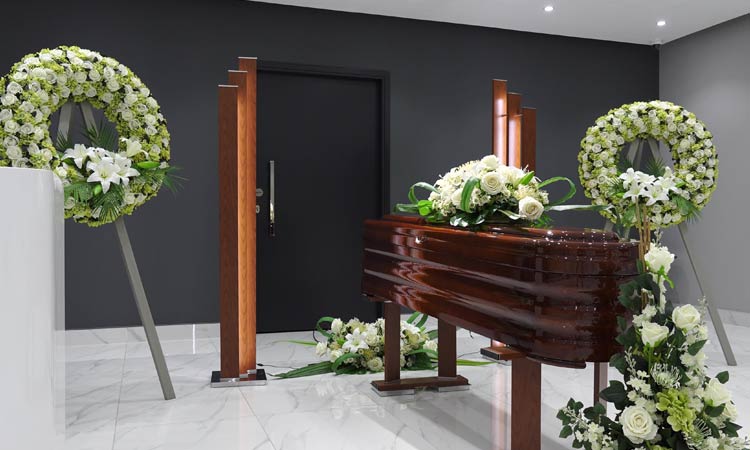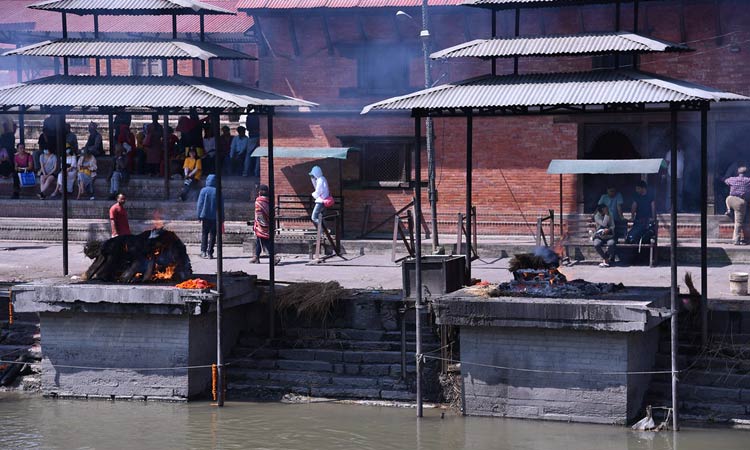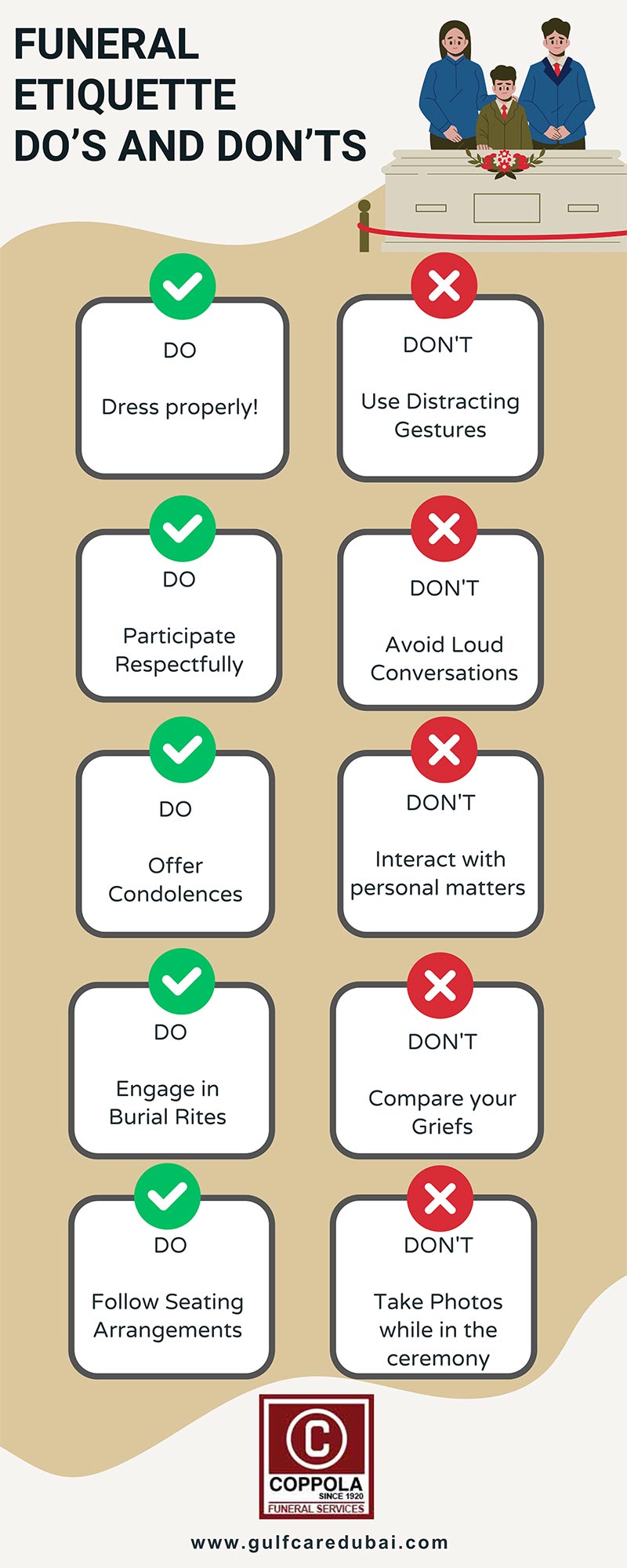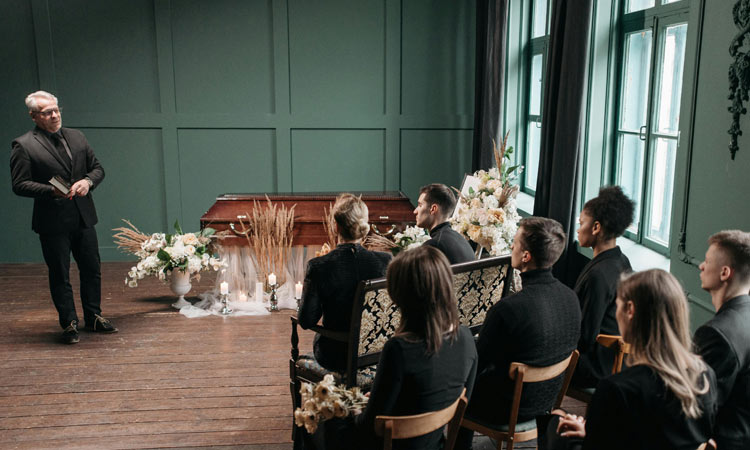People have adopted different ways to honor their loved ones according to their cultural and religious background. Understanding and honoring these customs is crucial when attending or organizing a funeral ceremony. You should research the cultural traditions before participating in a funeral to know the appropriate behavior, dress codes and other funeral etiquette. For instance, you possibly need to cover your head or remove your shoes before entering the funeral home or the place of worship. Some cultures may require bowing or kneeling in front of the casket, offering flowers or incense, or observing a moment of silence.
This article aims to provide insights into the varying practices of funeral etiquette across various religions. From Christian and Catholic ceremonies to the rituals observed in Eastern religions like Buddhism, Hinduism and Islam, as well as Jewish practices. Understanding these rituals and customs is crucial for attending or organizing a respectful funeral memorial. By the end of this article, you will have the skills to handle these events, with grace, consideration and empathy regardless of the beliefs and customs you may encounter.
Understanding Funeral Etiquette Across Religions

General Principles of Funeral Etiquette
- Behavior and Dress Code: Always research the traditions of the funeral you are going to attend. This might include specific dress code which are modest, black clothes most of the time or understand when to remove shoes or cover your head. This ensures that you respect the deceased and the grieving family and friends.
- Participating in Rituals: Participation in funeral rituals with respect is essential. The rituals could involve bowing or kneeling in front of the casket and participating in prayers and hymns. Each culture has its own rituals, so it is important to know what is expected in the funeral.
- Understanding and Respecting Customs: When you’re attending a funeral of a different faith, dress appropriately to show respect which normally means conservatively. Also be aware if there are any specific dress codes. Follow the lead of other people in case of unfamiliar rituals and customs.
By following these guidelines you help create a respectful and comforting environment that pays tribute to the deceased’s life and offers solace to their grieving family.
Christian Funeral Etiquette

Common Practices
Christian funerals are deeply rooted in tradition, which reflects shared beliefs, within the community and provides comfort for those mourning. The service often includes several key elements. The “wake” which is often led by a priest includes prayers, readings from the Bible and recitation of the rosary to allow family and friends to gather for support and condolences.
This is followed by the “funeral mass” which is a formal ceremony held in the church. This ceremony symbolically signifies the soul’s journey back to God. During this service it’s customary to sprinkle Holy Water on the casket or urn and decorate them with items like a bible or crucifix. The ceremony usually concludes with the Rite of Committal at the burial site or crematorium where final respects are paid.
Do’s
- Dress Appropriately: Show respect and solemnity through your choice of attire. Opt for dark, subdued colors like black, navy or gray. Make sure that your clothing is modest, covering shoulders and knees, to honor the church’s decorum and maintain reverence for the occasion.
- Participate Respectfully: Engage in hymns. Respond to prayers with ‘amen’ as appropriate during the service. If you are invited to deliver a eulogy speak from your heart, as a way to honor the life of the deceased.
- Arrive On Time and Silence Electronics: Being punctual demonstrates respect, for both the departed individual and their family. Remember to turn off or silence your phone and any electronic gadgets to prevent disruptions during the service.
- Follow Seating Etiquette: Remember to follow seating etiquette by letting the deceased family members sit at the front and finding a seat quietly to maintain an atmosphere.
Don’ts
- Avoid Casual or Flashy Attire: Avoid wearing casual or flashy attire such as bright colors or revealing clothing. The focus should be on the ceremony and showing respect rather than drawing attention with style choices.
- Do Not Disturb the Service: Be mindful of your timing and try not to disrupt the service by arriving late or leaving early. If you must leave early do before it begins.
- Refrain from Touching Sacred Items: Respect sacred items like an open Bible on the altar, by refraining from touching or moving them.
- Limit Personal Conversations: Keep conversations to a minimum during the service. If necessary speak quietly and discreetly to maintain the respectful atmosphere of the service.
By following these guidelines you help create an environment of respect which allows the attendees to focus on service and support the family during their time of need.
Jewish Funeral Etiquette

Common Practices
Jewish funeral customs are steeped in tradition and are guided by the teachings of the Torah. The funeral is conducted swiftly, often within a day of passing, and includes washing and dressing the body carried out by members of the Chevra Kadisha. The rituals are performed by individuals of the same sex as the deceased. The deceased is dressed in a shroud called tachrichim and placed in a basic wooden coffin symbolizing equality even in death.
The funeral service is typically held at a synagogue or funeral home. Led by a Rabbi, the service includes prayers, psalms, and a eulogy showing respect and honoring the departed. Embalming is not practiced, and flowers and music are generally avoided during the ceremony. After the service, the burial takes place quickly where family members participate in filling the grave as an act of goodness known as mitzvah.
Do’s
- Dress Modestly: Your attire must be conservative and avoid wearing bright colors. Men are expected to wear a suit and tie, and a yarmulke as a head covering, while women should wear a skirt or dress. Head coverings for women are not mandatory but are appreciated.
- Participate Respectfully: Participate in prayers and hymns accordingly. If you are unsure of the rituals, follow the lead of others.
- Offer Condolences: Offer your sympathy to the family in simple and kind words. Instead of traditional gifts like flowers, donations are recommended to a charity chosen by the family.
- Engage in Burial Rites: It is a tradition for attendees to take part in filling the grave with dirt, as a way to show their last act of respect for the deceased.
Don’ts
- Keep Gestures Simple: Avoid gestures like flowers and elaborate displays as they don’t align with Jewish traditions. Open casket services and embalming are not part of the practice.
- Refrain from Loud Conversations: Avoid loud conversations, during the service. Save chats for later outside of the service area.
- Limit Personal Interactions: Stay focused on the rituals and prayers, during the service. Offer condolences keeping interactions brief to respect the proceedings.
- Respect the Grieving Process: After the funeral it’s important to show support during the Shiva, a seven-day mourning period. If you’re invited to the family’s home make sure your visits are brief and focus on the comfort of the grieving family.
By following these guidelines, you can attend the Jewish funeral showing respect and support, honoring both the deceased and their family.
Islamic Funeral Etiquette

Common Practices
Islamic funerals are deeply rooted in community and spirituality. The process often begins before the person’s passing, with loved ones gathering to offer prayers and support. After the passing, prompt arrangements are made for the funeral rites within 24 hours. This is done per the principle that the burial should occur as soon as possible to honor the deceased and comfort the family.
The body is washed (ghusl) by family members of the same sex as the deceased, before wrapping it in a simple white shroud (kafan). The funeral service, led by an imam, usually lasts 30 to 60 minutes. Involves prayers directed towards Mecca. It is common for the entire Islamic community to join in and the occasion is known for its quiet and reflective nature.
Do’s
- Dress Appropriately: Wear modest attire in subdued colors like white, which symbolizes humility or darker hues such as grey, black or brown. Both men and women should dress conservatively covering the head and body appropriately.
- Express Condolences Respectfully: After the burial, it is a tradition to visit the family’s home to offer condolences. Plan on spending some time participating in the meal served and engaging in conversations that bring comfort to the grieving family.
- Participate in Burial Rites: If invited you have the option to take part in filling the grave with soil, a gesture seen as a final service to the deceased.
- Bring Food During Mourning: During the first three days of the 40-day mourning period, it is customary to bring food to the home of the family to help them during their time of grief.
Don’ts
- Avoid Loud Grieving: Please keep grief expressions gentle and avoid loud crying or dramatic actions during the service to maintain respect. Mourn respectfully, in line with Islamic rites.
- Refrain from Recording: Remember not to take any photos or record during the funeral service as it may be seen as disrespectful.
- Limit Personal Interactions at the Service: Keep your interactions limited and focus on the rituals during the service. Conversations should be saved for after the service, outside of the prayer areas.
- Respect the Privacy of the Burial: Typically, only men can attend the burial at the gravesite. This may vary based on community and family preferences. Always check with the family or organizers before attending.
Following these guidelines ensures that your presence at an Islamic funeral is respectful and supportive for the grieving family.
Buddhist Funeral Etiquette

Common Practices
When attending a Buddhist funeral, maintain a respectful attitude throughout the ceremony. Upon arrival proceed to the altar where you can show respect with a slight bow and hands folded in prayer. This moment is a time for reflection on the life of the deceased. If there are monks, they usually give signals on when to sit or stand helping attendees to participate in the ceremony respectfully.
The family members of the deceased often wear white, as a symbol of purity and mourning. Other mourners are advised to wear simple, dark clothing to reflect the seriousness of the occasion. It’s best to avoid wearing expensive items as they may be seen as inappropriate.
Do’s
- Dress Appropriately: Choose dark clothing. Men and women should opt for outfits that are not attention grabbing. Women should avoid wearing jewelry. Both genders should avoid bright colors, especially red, which symbolizes joy in Buddhism.
- Participate Respectfully: If you know the chants you can join in, otherwise it is perfectly fine to remain silent and observe. This respects both the religious practices and the seriousness of the event.
- Follow Monks’ Leads: If monks are leading the ceremony pay attention to their cues. This will help you follow along, with the service smoothly and stay aligned with the proceedings.
- Bring Appropriate Offerings: If you choose to bring offerings, bring items, like fruits, candles and flowers. It’s important to show humility and respect when offering these items.
Don’ts
- Avoid Loud and Disruptive Behavior: It is essential to maintain respectful behavior throughout the ceremony. Loud talking or inappropriate laughter is considered disrespectful.
- Refrain from Inappropriate Attire: Dress appropriately by avoiding flashy clothing. Stick to dark simple outfits that match the tone of the funeral.
- Do Not Disturb the Rituals: Respect the rituals by participating or observing without causing any disturbances. It’s crucial to uphold the atmosphere and religious practices being followed.
- Limit Personal Conversations: Keep conversations minimal. Ensure they are conducted quietly away from the main areas of the funeral service.
By following these recommendations your presence at a Buddhist funeral will demonstrate respect and consideration.
Hindu Funeral Etiquette

Common Practices
Hindu funeral traditions are steeped in customs and spirituality reflecting the belief, in reincarnation and the soul’s journey. The funeral typically occurs within a day of the passing starting with a wake or visitation at the family’s residence. Following this is the cremation ceremony, known as MukhAgni held at the cremation grounds where usually the eldest son leads under the guidance of a priest. The Shraddha ceremony, which occurs about ten days later, helps the soul of the deceased enter the next world. This ceremony may involve meals and gift exchanges and is a significant part of the mourning process.
Do’s
- Dress Appropriately: You should wear white as it is a symbol of purity and mourning. Avoid black or bright colors. Dress modestly with clothing that covers arms and knees without being overly elaborate. Open-toed shoes are acceptable while head coverings are not required for either gender.
- Participate Respectfully: If invited, take part in rituals like circling the body, chanting, or singing hymns. These rituals are believed to generate positive energy which helps the soul leave the body.
- Offer Condolences: Offer your condolences to grieving family members with heartfelt words. It is a practice to send food or fruit baskets as gestures of sympathy during the mourning period. The grieving family generally refrains from cooking.
- Respect the Ceremonies: Respect the ceremonies by attending them with a demeanor. If you are unfamiliar, with the customs it is advisable to observe and follow the lead of others or seek guidance from the funeral coordinator.
Don’ts
- Avoid Inappropriate Behavior: Maintain a quiet and contemplative attitude during the ceremonies. Avoid engaging in loud conversations or laughter.
- Refrain from Touching the Body: The body is treated with extreme respect and usually not touched by attendees. Only closest family members can touch the body who perform specific rituals.
- Do Not Bring Flowers or Gifts to the Funeral: There is no need to bring flowers to the funeral as the deceased’s body is already adorned with flowers. Instead, these should be given to the family ahead of the ceremony.
- Avoid Photography: Show respect by refraining from taking photographs during this occasion.
By following these suggestions, you can ensure that your presence, at a Hindu funeral is respectful and supportive honoring both the traditions and the journey of the soul.
Conclusion
In this article, we explored funeral etiquette across various religions. We underscored the universal importance of showing respect. We highlighted the need to offer sympathy and support to those in mourning. We also emphasized honoring specific cultural and religious practices. We also explained what to do and what to avoid for each faith. By following these guidelines, we can show empathy and respect for different traditions and beliefs.

Feel free to share this infographic. Embed it on your website using the code below!


